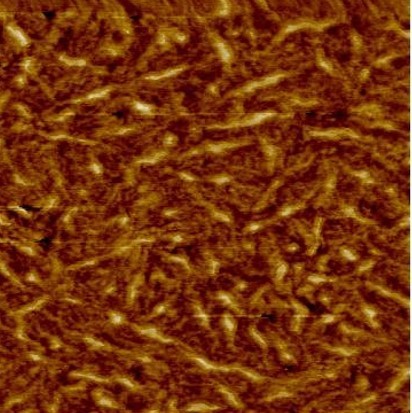Avishek Aiyar, David M. Collard, Rakesh Nambiar, and Elsa Reichmanis from the School of Chemical and Biomolecular Engineering at Georgia Tech have developed a method to increase dramatically—by more than 2 orders of magnitude—the mobility of organic field effect transistors (OFETs). Their operationally simple approach uses low-intensity ultrasound to aggregate solutions of poly(3-hexylthiophene) (P3HT) within chloroform (CHCl3) or other common solvents. When these ultrasound-induced aggregates are deposited onto a substrate via spin-coating, the resulting polymer film exhibits significantly higher charge transport compared to other approaches. Specifically, irradiating a P3HT-containing CHCl3 solution with 40 kHz (130 W) of ultrasound for less than 5 minutes increases the film’s mobility to 2.6 x 10–2 cm2/(V•s) compared with a mere 4.2 x 10–4 cm2/(V•s). Achieving this 100-fold improvement in charge transport did not require any additional processing or special deposition techniques.
- Dramatic increase in mobility: Yields a 2-order-of-magnitude increase in charge transport
- Fast: Achieves 100-fold improvements after a mere 5 minutes of ultrasound
- Simple: Requires only low-intensity ultrasound and eliminates the need for dielectric surface modifications or post-deposition treatment of the device
- Reproducible: Provides more consistent results than other methods
This technology provides an efficient approach for mass manufacturing high-performance large-area printed electronics for:
- Flexible integrated circuits
- Flexible electronic displays
- Medical implants and other biodegradable electronics
- Televisions (OLED) and large electronic displays
- Smart packaging
- Interactive media products (gadgets, cards, toys)
- Branding and security (counterfeiting mitigation and product compliance)
- Wearable communications devices
- Electronic paper, plastic/flexible electronics
- Solar cells
- Radio-frequency identification (RFID) tags
- Data/Memory storage
- Consumer electronics
This technology was developed to provide a simpler, faster method to increase mobility/charge transport, improving the performance of electronic devices. Various methods exist for enhancing charge transport and field effect mobilities in organic thin-film transistors; however, these techniques have significant drawbacks. For example, thermal annealing followed by slow crystallization requires time-consuming processing at extremely low oxygen and moisture levels. Dielectric surface modification using self-assembled monolayers is difficult to achieve and also requires a moisture-free environment. Less complex methods exist, but they do not yield significant improvements in mobility without the use of high-purity, process-intensive synthesized polymers.

